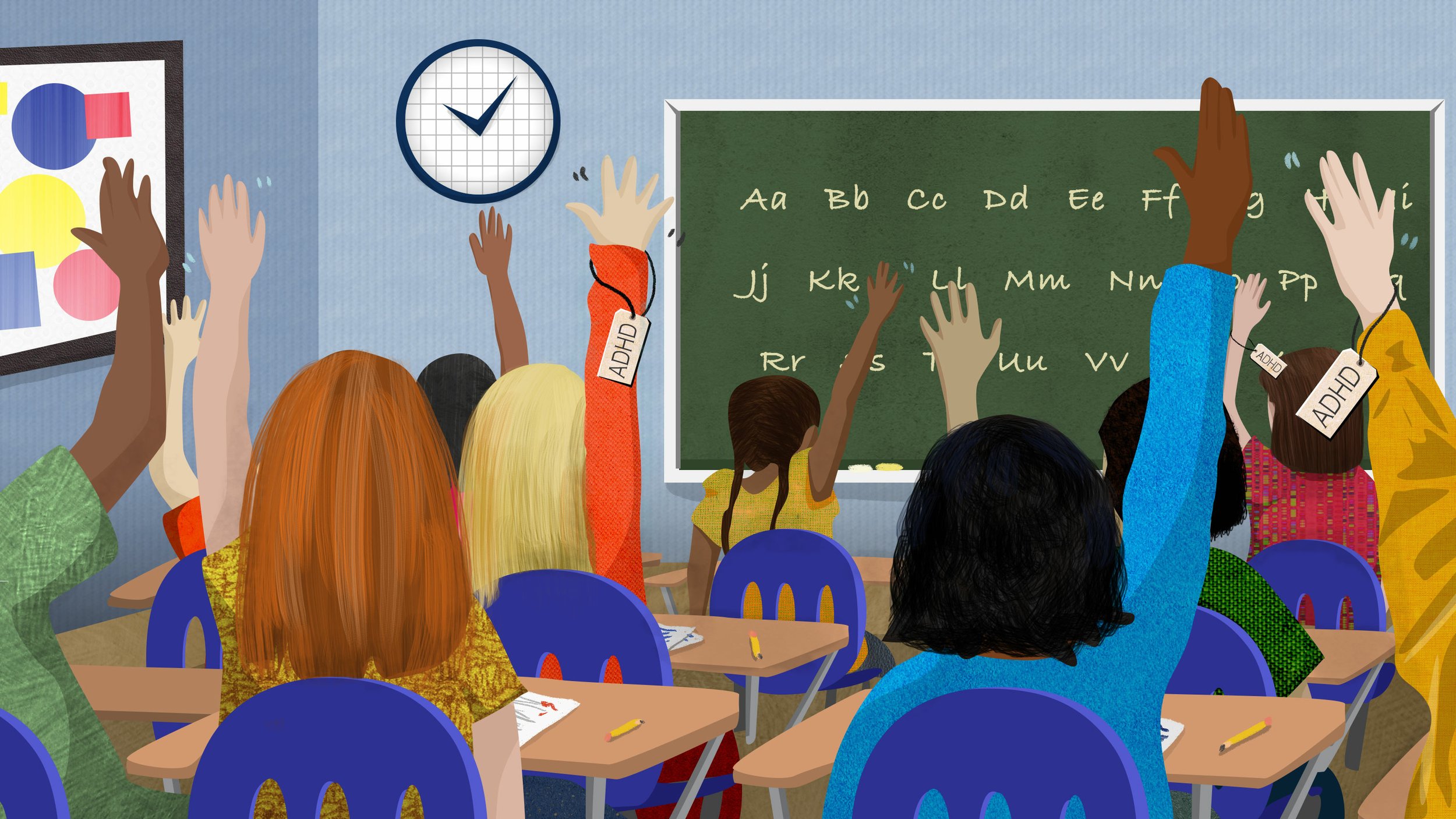Navigating Symbols & Stress In Schools
Breaking Barriers and Empowering Students
Photo by nsit0108
In our last discussion, we talked mostly about attachment theory and family systems theory, focusing on how family love styles impact students' educational experiences. This exploration brought us closer to understanding the forces shaping our students’ lives beyond the classroom walls. Today, we shift our focus to two new theoretical frameworks that will deepen our insight into the barriers and opportunities that shape our students' academic paths.
As educators, we witness daily how our students navigate a world rich with symbols. Each symbol, from the worn-out textbooks they carry to the smartphones they may or may not own, carries deep-seated meanings that influence their self-identity and worldview. Within the framework of symbolic interactionism, these are not mere objects but potent symbols of their socio-economic realities and aspirations.
That leads us to this week where we will explore the intricate symbolic worlds of students attending low-income schools. Here, every interaction, every object, and every moment can reinforce a narrative of limitation or, alternatively, become a stepping stone towards empowerment. We will also introduce the ABC-X stress model, a lens through which we can understand and address the unique challenges these students face. This model helps us to better understand how stressors, resources, and perceptions interact to influence educational outcomes—offering a grand view of student resilience and vulnerability.
The ABC-X Model: Understanding and Action
Quick video breaking down the ABC-X Model of Family Stress and Coping by Jarom Petersen
The ABC-X model, as explained by psychologist, Elena Sanz, provides a framework that allows us to see how various elements interact to determine whether a stressor will lead to a crisis (2023). In educational settings, this model helps us understand that not every stressor has to lead to a negative outcome, such as academic underperformance or disengagement from school.
'A' represents the stressor event, which could range from personal issues like family crises to academic challenges such as demanding schoolwork.
'B' encompasses the resources available to students, which could include tangible support like tutoring programs and intangible resources such as the resilience they develop through overcoming past obstacles. Sanz highlights the importance of family adaptability and the quality of emotional ties, which can be paralleled in educational settings by supportive relationships between students and their teachers (Sanz, 2023).
'C' refers to the perception or definition of the event. How students perceive stressors can drastically affect their impact. For instance, viewing a challenging project as an opportunity to learn rather than a burden can shift the outcome from stress to success.
To illustrate the pervasive nature of these stressors, let’s consider a recent challenge at my local high school. At the start of this academic year, our incoming freshmen, still carrying conflicts from their middle school days, escalated their disputes into frequent, large-scale fights. These conflicts were not only distressing in themselves but also painted our school in a harsh light, affecting the school's overall environment and the student’s ability to learn and feel safe.
Photo By Ilmi
One particular incident involved over 20 students—a stark reminder of the pressures these young individuals face daily. While it might be tempting to dismiss this as isolated misbehavior, it's crucial to acknowledge the broader context. These conflicts spill over, affecting not just the participants but every student and teacher in our community. Even those who are not directly involved experience the repercussions, from disrupted classes to heightened security measures, all of which contribute to an atmosphere of tension and distraction.
By understanding these dynamics through the ABC-X model, we can better support all our students, not only in managing their immediate reactions but in building resilience against the ongoing challenges they face. As we move forward, our focus is not only on quelling these incidents but on addressing their root causes—providing a stable, supportive environment that fosters learning and development rather than conflict.
Deep Dive into Symbolic Interactionism
Symbolic Interaction Explained In 5 Minutes by Armchair Academics
Symbolic interactionism argues that we are not merely passive inhabitants of our social world but active participants in its creation (Carter & Alvarado, 2018) . This perspective illuminates how individuals derive meaning from interactions and how these meanings guide their actions. For students in low-income schools, symbols—whether a torn-up textbook, a second-hand uniform, or even their route to school—carry weighted meanings that reflect broader socio-economic struggles.
Let’s introduce hypothetical student, Sophia.
For Sofia, a student whose story encapsulates these challenges, her crumbling textbook is not merely a nuisance. It symbolizes the broader deprivation her family faces, a daily reminder of the struggles at home. However, her response in the classroom—to eagerly participate and answer questions—is a proclamation. With each raised hand, she asserts, "I am more than my circumstances." This act of defiance is a powerful example of how individuals use symbols not only as a reflection of reality but as a tool for reshaping that reality.
Educators, families, peers, and community members play pivotal roles in interpreting and reshaping the symbols that permeate students' lives. When teachers recognize a worn-out book not just as a sign of financial hardship but as a potential marker of a student's resilience and desire to learn, they can tailor their support accordingly. This understanding allows educators to connect with students like Sofia on a deeper level, transforming everyday classroom interactions into opportunities for affirmation and empowerment.
Artwork By Molly Ferguson Art
According to studies such as those by Penuel and Wertsch (1995), the interactions within a classroom can significantly alter the symbolic meanings attached to educational experiences and achievements. These researchers argue that the classroom is a microcosm where social meanings are constantly negotiated and redefined. By actively engaging with these symbols, educators can help students reframe their narratives in a positive light, encouraging them to see themselves as capable and resilient learners.
Further exploring this, Rios and Galicia (2014) discuss how urban school students navigate complex social terrains that are often laden with negative symbols about their identities and potentials. They suggest that educators who understand and actively engage with the symbolic frameworks of their students can better support their academic and personal growth, essentially altering the students' trajectories.
As we dive deeper into how symbolic interactionism affects our students, we must consider the level of influence our actions and recognitions have. It is not merely about changing perceptions but about transforming the educational environment into a space where every symbol, every interaction, fosters a sense of capability and possibility. By doing so, we not only address the immediate challenges these students face but also contribute to a longer-term enhancement of their self-concept and aspirations.
The ABC-X Model in Action: Student Stories
Let's look into the stories of Alma and Henry, two students who personify the complexities and potentials within this model.
Alma: Navigating Stress with Resilience
Photo by InputUX
Alma faces significant 'A' stressors, including financial hardship and familial responsibilities that often take away from her ability to focus on schoolwork. However, 'B' resources are robust and plenty in her life—she finds immense support from school mentors and utilizes local community programs, which equip her with tools to manage her academic and personal challenges. Alma's 'C', her perception of these stressors, is critically shaped by the encouragement she receives. She views school not just as an educational institution but as a sanctuary where she can escape life's pressures and focus on her future.
This perception transforms her potential 'X', the crisis of academic underachievement, into a narrative of success against the odds. Educators can learn from Alma’s story that providing supportive resources and fostering positive environments can significantly alter students' perceptions and outcomes.
Henry: From Isolation to Inclusion
Photo by Dangubic
Henry's story begins with similar 'A' stressors: social isolation and the struggle to fit in, which are compounded by his background as a child from a single-parent household experiencing economic strain. His 'B' resources initially seem scarce, but the involvement in school-based clubs and sports introduces him to peers who share his interests and challenges, gradually building his social support network.
For Henry, 'C'—his perception of his situation—shifts from seeing school as a battleground to viewing it as a place of opportunity and growth. This shift is pivotal, as it prevents the 'X', a crisis of disengagement and potential dropout, turning it instead into a journey of personal and academic development.
Penuel and Wertsch (1995) highlight how educational environments can influence students' perceptions and coping strategies. Rios and Galicia (2014) further illustrate how interventions focused on enhancing 'B' resources can transform students' responses to 'A' stressors, thereby preventing the 'X' of academic failure.
It becomes clear that educators play a vital role not only in providing resources but in actively participating in reshaping how students perceive and respond to challenges. This approach not only addresses the immediate challenges but also fosters long-term resilience and success.
Creating a Responsive Classroom Environment
Photo by Planum
First and foremost, educators can create classroom environments that acknowledge and respect the symbols important to students. This involves:
Cultivating Symbolic Awareness: Educators need to be attuned to the various symbols present in their students' lives. This could be recognizing that a backpack is not just a backpack but a symbol of a student's socio-economic status or that participation in class discussions might carry different meanings for students from diverse backgrounds. By understanding these symbols, teachers can better connect with their students on a meaningful level.
Symbolic Integration in Teaching: Incorporating students' cultural and personal symbols into the curriculum can make learning more relevant and engaging. For instance, using examples in math or literature that relate to students' real-life experiences can validate their backgrounds and make the educational content more relatable.
Enhancing Resilience through the ABC-X Model
With the ABC-X stress model, educators can develop strategies to enhance resilience among students by focusing on 'B' resources and 'C' perceptions (Ukasoanya, 2013):
Strengthening 'B' Resources: Schools can implement programs that build both tangible and intangible resources. Tangible resources might include access to tutoring or technology, while intangible resources could be mentorship programs or psychological support. Establishing strong partnerships with community organizations can also expand the resources available to students.
Reframing 'C' Perceptions: Helping students reinterpret the stressors ('A') they face can mitigate the impact of these stressors. Educators can lead workshops or discussions on resilience, teaching students how to view challenges as opportunities for growth and learning (Li et al., 2024). This reframing can change the perceived severity of stressors, altering their impact on students' academic and personal lives.
Support Systems and Community Engagement
Photo By Saleem
A stable support system is essential for utilizing and reinforcing the 'B' resources available to students. This involves:
Engaging Families and Communities: Schools should strive to engage families in the educational process, recognizing them as crucial elements of the support system (Jagiello et al., 2024). Community events, parent-teacher meetings, and regular communication can help families understand the school's role in their children's lives and how they can contribute.
Peer Support Networks: Creating peer mentorship programs where older students guide younger ones can help foster a supportive school culture (Jagiello et al., 2024). These programs not only provide academic support but also build strong social connections among students, reinforcing the positive symbols associated with school and education (Graham et al., 2022). My school already does this in the form of a “Link Crew” club where freshmen are paired with seniors and juniors as their guides. This has seen great success as the freshmen don’t feel as alone and build bonds with their classmates beyond their grade levels.
By applying these strategies derived from our understanding of symbolic interactionism and the ABC-X stress model, educators can create more inclusive and supportive educational environments. These environments will not only address the immediate needs of students but also empower them to navigate and reshape the symbolic and stressful aspects of their lives effectively.
Overcoming Dead-End Syndrome
The stakes are high, as Dead-End Syndrome represents more than just academic underachievement; it embodies the loss of potential and the perpetuation of cycles of disadvantage. Without intervention, students trapped by this syndrome may never fully realize their capabilities or see beyond the limitations imposed by their circumstances. This not only affects individual students but also has broader implications for society, as it contributes to the ongoing cycle of social and economic inequality.
Empowering Students and Communities
Educators and parents can significantly alter the trajectory of students' lives. It is through our collective efforts that we can shift the narrative from stagnation to progression, from disillusionment to hope.
The implications of successfully overcoming Dead-End Syndrome are profound:
For Students: Empowering students with the tools to reinterpret their challenges as opportunities can ignite their intrinsic motivation and drive for success, transforming their educational journey and life prospects.
For Educators: Educators gain a deeper understanding of the socio-cultural dynamics at play, enabling them to create more responsive and supportive learning environments that cater to the needs of all students.
For Society: By addressing the root causes of Dead-End Syndrome, we can foster a more equitable educational landscape where every student has the opportunity to succeed, thereby enhancing community well-being and economic vitality.
Redefining the Future of Education
Photo By alisaaa
Let us then, as a community of educators, parents, and concerned citizens, commit to applying these insights to our daily interactions with students. We must advocate for policies and practices that acknowledge and address the complexities of student lives. We must strive to be the catalysts for change that can break the chains of Dead-End Syndrome, ensuring that this term becomes a relic of the past, rather than a defining feature of our educational system.
Together, we can redefine the narrative around student potential and success. Join us in this mission to transform Dead-End Syndrome from a barrier to a breakthrough, ensuring every student not only survives but thrives in their educational journey and beyond.
Additional Resources and Sites
https://exploringyourmind.com/the-abc-x-model-of-family-crisis-and-coping/
Symbolic Interactionist Theory on Education | Introduction to Sociology (lumenlearning.com)
References







